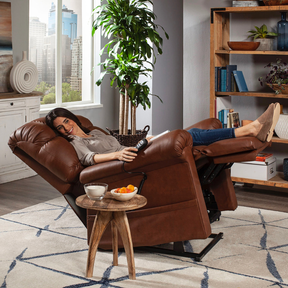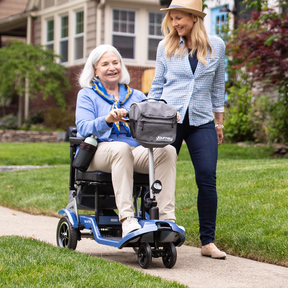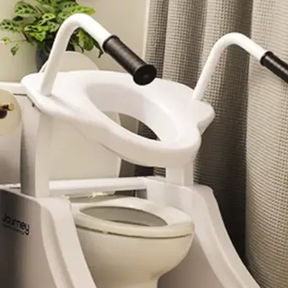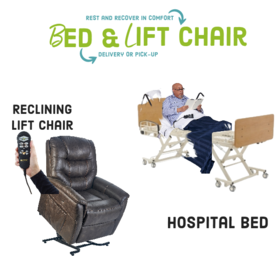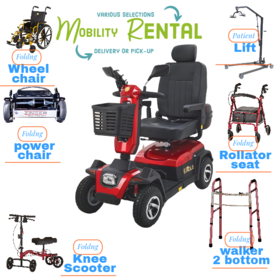Blog Starting with Right Bariatric Wheelchair: A Guide to Optimal Comfort and Width Selection
Welcome to our comprehensive guide on how to choose an optimal bariatric wheelchair that provides the perfect balance of width and comfort. First, let's clarify what a bariatric wheelchair is. Essentially, it's a specially designed wheelchair that can hold individuals who weigh over 350 pounds, compared to a standard wheelchair that can hold up to 250 pounds.
Now, why is it crucial to select the right width and comfort level in a bariatric wheelchair? Well, it's simple—a poorly fitted wheelchair can cause discomfort, pressure sores, and even injuries. That's why it's essential to select the proper weight capacity, seat width, and wheel type. Continue reading to discover all the factors to consider before buying a bariatric wheelchair.
Factors to Consider When Selecting a Bariatric Wheelchair
When selecting a bariatric wheelchair, there are several factors that you need to consider ensuring that you choose the best option.
Weight Factors of Bariatric Wheelchair: The weight capacity is crucial to guarantee that the chair can handle your weight without breaking down. You need to choose a chair with a weight capacity that exceeds your current weight to ensure maximum safety.
Width and Depth Factors in a Bariatric Wheelchair: Seat width and depth play a significant role in the comfort of your bariatric wheelchair. The seat should be wide enough to accommodate your waistline comfortably, while the depth should allow for ample legroom. Choosing the wrong seat dimensions can cause discomfort and pain, leading to a suboptimal user experience.
Wheel Type and Size of Bariatric Wheelchair: The wheel type and size have a considerable impact on the maneuverability and comfort of your bariatric wheelchair. Larger wheels are better suited for outdoor activities, while smaller wheels provide greater indoor mobility. The wheel type also affects terrain handling, so you must consider the type of surface you intend to use the chair on.
By taking these factors into account, you can make a more informed decision when choosing a bariatric wheelchair that meets your needs.
Types of Bariatric Wheelchairs
When it comes to types of bariatric wheelchairs, there are two main options: manual and electric. Manual wheelchairs require the user to physically propel themselves forward using the wheels. They are typically more affordable and lightweight but can be difficult to use for those with limited upper body strength. Electric wheelchairs, on the other hand, use a motor and rechargeable battery to move. They are more expensive and heavier than manual wheelchairs but offer greater convenience and ease of use. Ultimately, the choice between manual and electric will depend on the user's individual needs and preferences.
Features to Look for in a Bariatric Wheelchair
When looking for a bariatric wheelchair, there are a few features that you should keep in mind to ensure maximum comfort and safety for the user. Firstly, adjustable armrests are essential, as they provide customized support for the arms and shoulders. This feature also makes it easier to transfer in and out of the chair.
Secondly, a reinforced frame is crucial in supporting the extra-weight capacity of a bariatric wheelchair. A sturdy frame provides better stability and reduces the likelihood of the chair tipping over.
Portability is another key feature to consider, especially if the chair is frequently transported. Look for chairs that have removable components for easy transport and storage.
Lastly, comfortable seating is essential to ensure that the user is comfortable throughout the day. Look for chairs with padded seats and backrests and adjustable footrests for added comfort.
Overall, the features listed above are important to consider when selecting a bariatric wheelchair. Keeping these in mind will help you choose a safe, comfy chair.
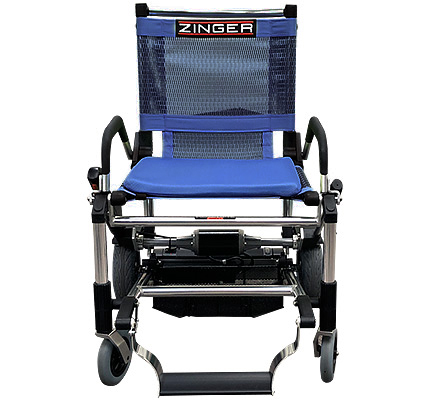
Choosing the Ideal Width and Comfort
When it comes to choosing the optimal width and comfort for a bariatric wheelchair, there are two key things to consider: measurement and customization. The measurement process involves taking precise measurements to ensure that the wheelchair is the perfect size for the individual. On the other hand, customization options enable further adjustments to optimize the wheelchair's support and comfort. The user can customize the wheelchair with adjustable footrests, cushioning, and other features to meet their specific needs. Proper measurements and customization options can help ensure that the bariatric wheelchair provides maximum comfort and support for the user, allowing for improved mobility and quality of life.
Maintenance and Care
To ensure the longevity of your bariatric wheelchair, regular maintenance and cleaning are crucial. For cleaning and sanitizing, use a gentle detergent or disinfectant and wipe down the frame, upholstery, and all other surfaces daily. Regular maintenance should include checking the condition of the tires, brakes, and other moving parts, and replacing any worn-out ones immediately. Don't forget to test the brakes before every use. With proper care, your bariatric wheelchair can provide you with the comfort and mobility you need for years to come.
Conclusion
Selecting the optimal width and comfort for a bariatric wheelchair is crucial for the user's well-being. Factors like weight capacity, seat width and depth, and wheel type and size must be considered. Also, look for adjustable armrests, a reinforced frame, and comfortable seating. Regular maintenance and care are also essential.
Tags
- contest
- event
- supplies
- design
- brand
- video
- Compression
- upright walker
- four wheel walker
- rollator
- wheelchair
- Ostomy
- elegantly
- elegantly
- accessibility
- Mobility
- knee walker rental
- knee scooter sales
- knee scooter
- post operative shoe
- anti-embolic stockings
- pain management
- cryotherapy therapy
- hot cold compress
- compression stockings
- lift chair
- wound Care
- air purifier
- fall prevention
- cushion
- oxygen therapy
- cpap, bipap
- Hospital Bed
- Life Aide
- EMS
- recovery
- splint
- knee brace
- Bathroom
- patient lift
- medical supply
- Wound dressings
- Lightweight Wheelchair
- hospital beds for sale
- sky medical supplies rentals
- compression socks
- Adult Diapers
- Rollator Walker
- Bed Wedge Pillow
- Hospital beds
- Patient Lifts and Slings
- Portable Oxygen Concentrator
- Patient Lift Slings
- knee scooter rental
- folding mobility scooter
- mobility scooter
- medical shoes
- raised toilet seat
- hospital beds for rent
- lift chair recliner
- chair lift
- electric wheelchair
- Power Lift Recliners for Elderly
- Senior Walkers
- Bedside Commodes
- whill wheelchair
- compression hose
- Whill Electric Wheelchairs
- Bariatric Wheelchair
- Recliner Chairs with Lift
- Colostomy Bag
- Crutches
- Medical Wedge Pillow
- skin barrier tape
- Post Surgery Ice Machine
- Bedside Commode
- chair lift recliners
- cane holder scooter
- lift chair prices
- drop arm commode
- rollator walker with ergonomic seats
- Hospital Bed Rental
- Wheelchair Tray
- Golden Technologies Lift Chair
- Nova GetGo Junior Rollator
- power lift recliners
- Knee Scooters and Crutches:
- stand up walker for seniors
- stand up walker as seen on TV
- Women's Walking Canes
- Knee Immobilizers
- Bed Wedge Pillow
- Medical Supply Stores
- Sit to Stand Lifts
- Grab Bars
- Compression Gloves
- incontinence bed pads
- Lift Reclining Chair
- Knee Walker Scooters
- Hernia Belt Near You
- Mobility Scooter Stores Near Me
- Folding Knee Walker
- Oxygen Concentrator Store
- Inogen Battery
- Electric Bed Frames
- Placing Lift Chair
- diaper brief
Related Posts
Get weekly articles in your inbox on the latest medical supply news, exclusive deals, and helpful health tips.
